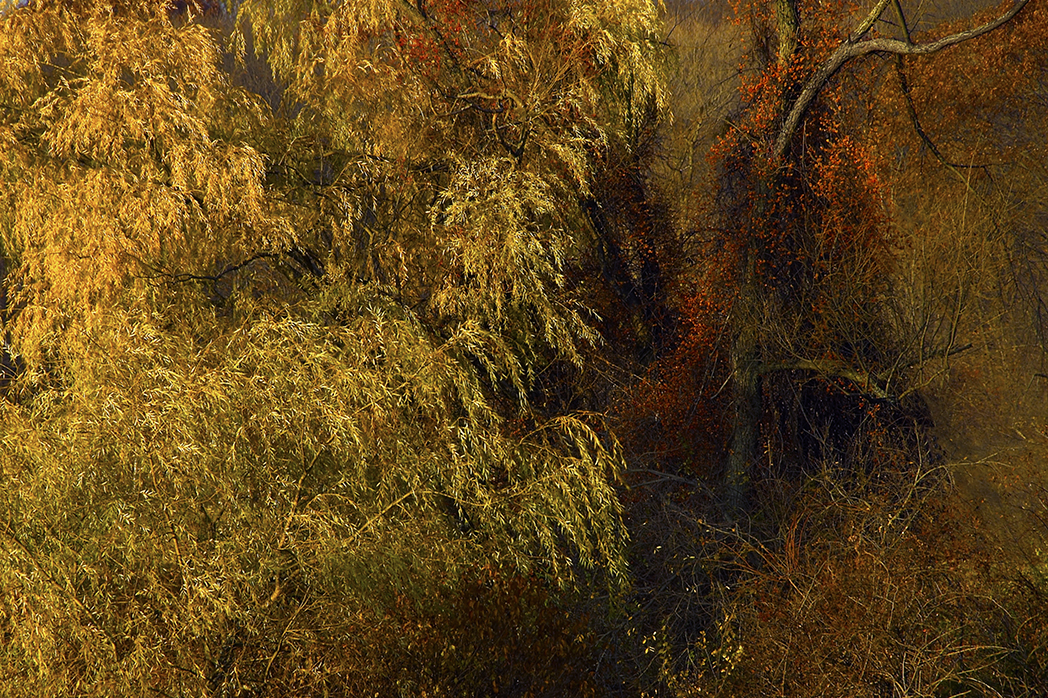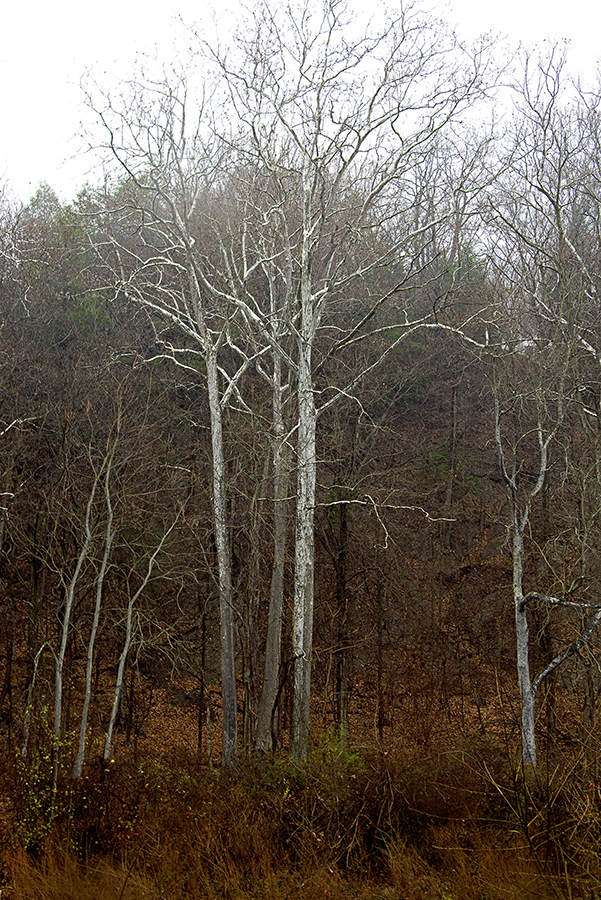Henry David Thoreau wrote, “Death is beautiful when seen to be a law and not an accident.”
In nature beauty often attends death, quietly, inexorably. Consider the bittersweet vine, its autumn beauty spreading deliberately along the margins of northeast Ohio’s hardwood forests. For the vine, the act of commingling seems less a random desire than a living imperative, sustaining itself as it does by robbing its host of light and nutrients. And any suggestion of symbiosis or benign reciprocity between vine and tree is illusory only, a black willow in this instance struggling silently beneath the weight of bittersweet, its vine as thick as a thumb, twinning about its host and, not without irony, explodes in a splendorous display of coral berries and orange calyx.




